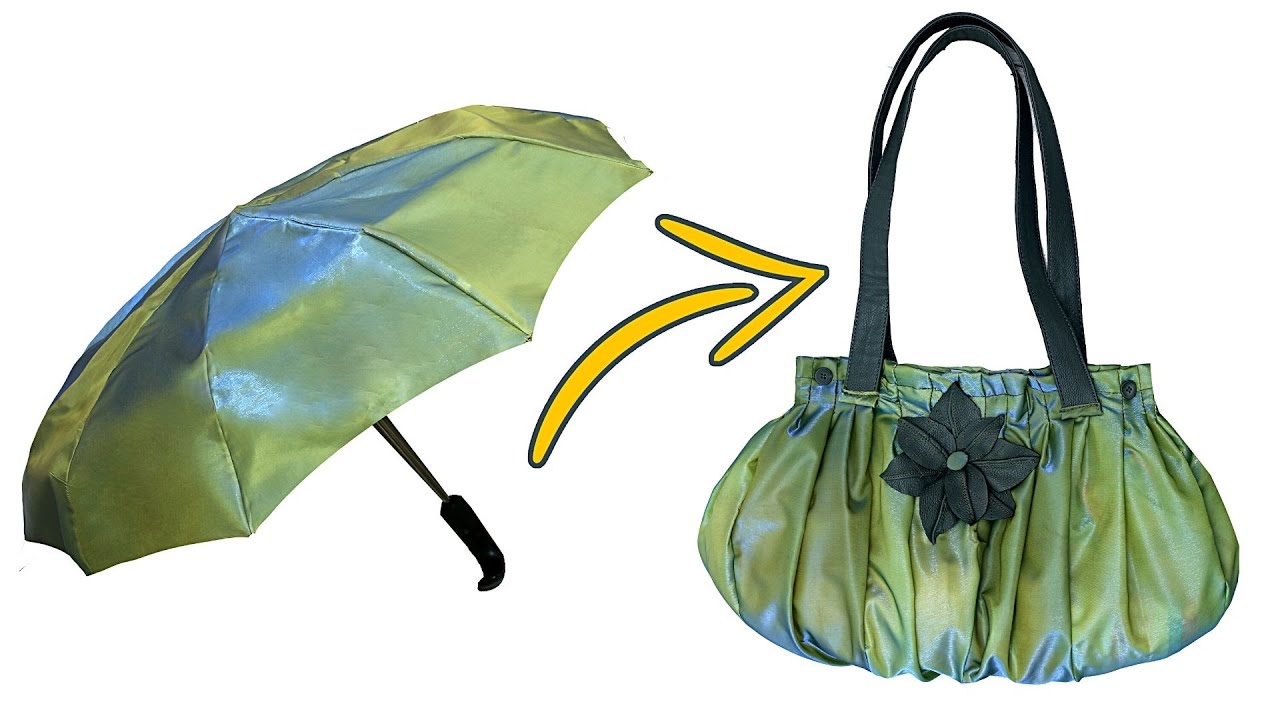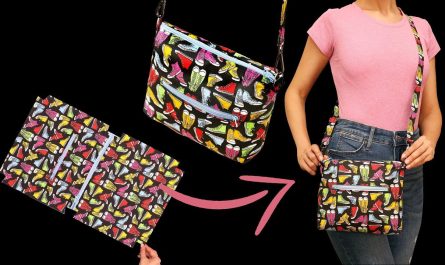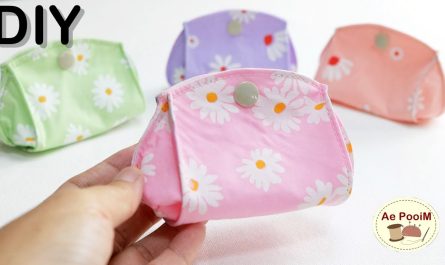In a world increasingly conscious of sustainability and environmental preservation, the age-old adage “one man’s trash is another man’s treasure” has never been more relevant. Upcycling — the creative reuse of discarded items — has become a global movement driven by eco-awareness, economic sensibility, and sheer ingenuity. Among the myriad of materials that often end up in landfills, the broken umbrella is a surprisingly rich resource for creative minds.
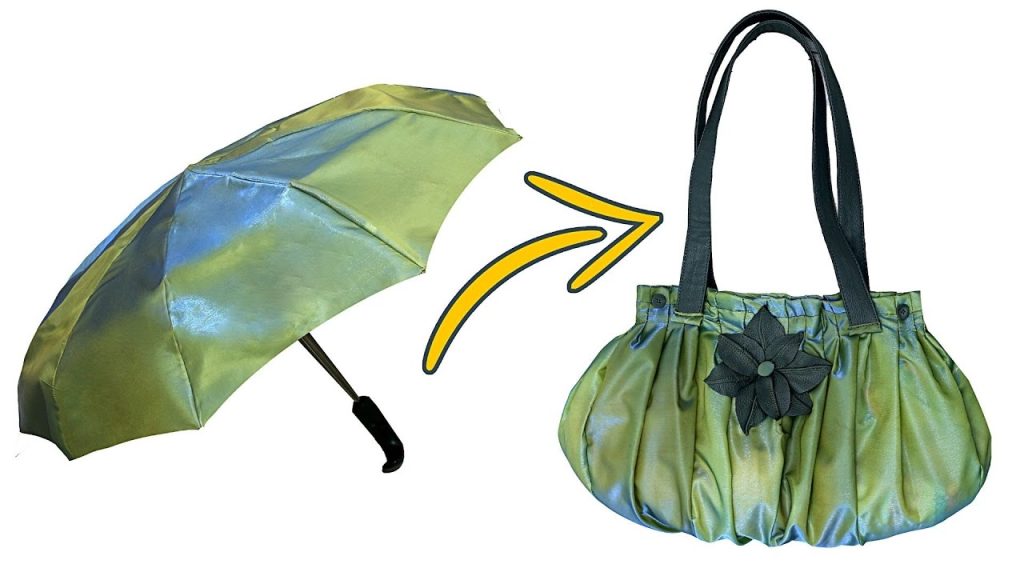
A broken umbrella might seem like a lost cause. The frame may be bent or rusted, and the fabric might be torn in places. But look closer, and you’ll see a strong, lightweight, water-resistant material just begging for a second life. With a little imagination and some basic sewing skills, that sad, unusable umbrella can be transformed into something stylish, functional, and enduring — a lovely woman’s bag.
This article will explore the process, inspiration, and benefits of turning a broken umbrella into a fashionable handbag. From understanding the materials to step-by-step guidance on crafting your own unique accessory, you’ll learn how something discarded can be transformed into something desirable.
Why a Broken Umbrella?
1. Abundant and Free
Umbrellas are cheap and ubiquitous. But they break easily — a gust of wind, a stuck mechanism, or a snapped rib can render them useless. Cities around the world see thousands of discarded umbrellas left in public trash cans, bus stops, and sidewalks after storms. These “junk” umbrellas are a free resource for anyone willing to collect and reuse them.
2. Durable, Water-Resistant Fabric
Umbrella canopies are typically made from synthetic fabrics like polyester or nylon, designed to be waterproof and wind-resistant. These materials are lightweight yet strong, perfect for making bags that can handle weather, wear, and weight.
3. Vibrant Designs and Patterns
Umbrellas come in all colors and patterns. From bold florals to minimalist black, these designs add a unique flair to your upcycled bag. You’ll often find high-quality prints and dye jobs on umbrellas that would be expensive to replicate otherwise.
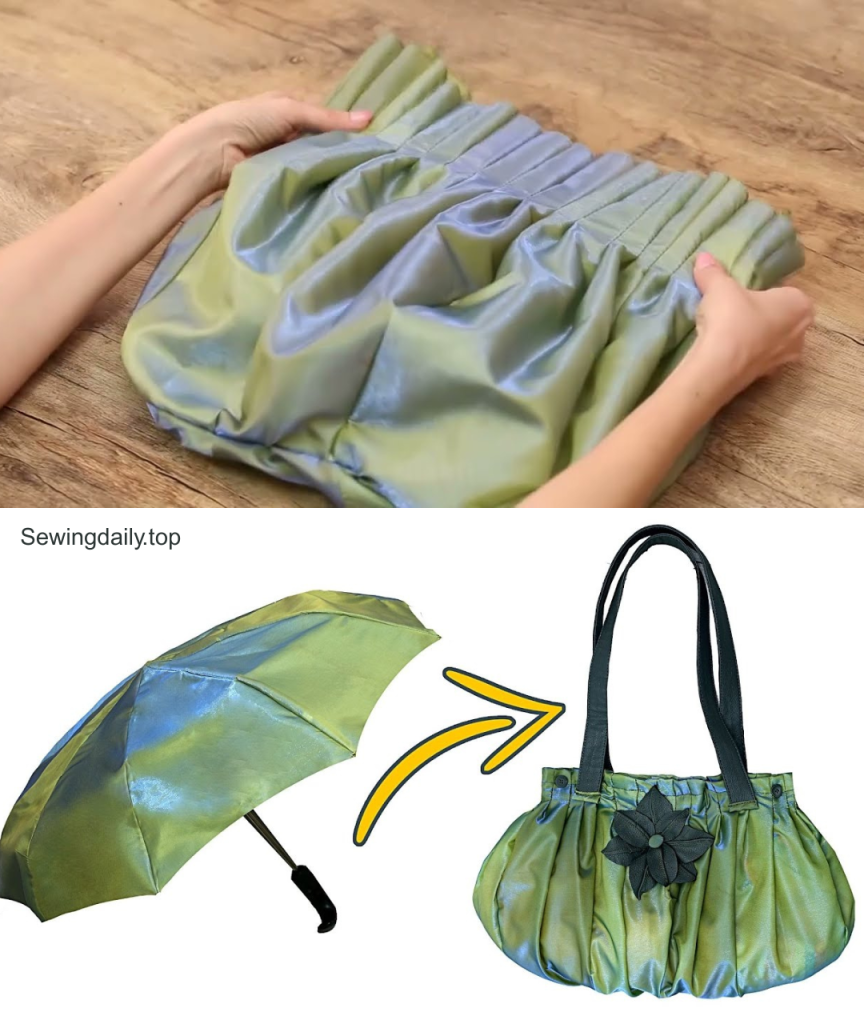
What Kind of Bag Can You Make?
The type of bag you can create from a broken umbrella depends on the size and condition of the fabric, but here are some popular ideas:
- Tote Bag: A simple rectangular carryall, perfect for groceries or everyday items.
- Shoulder Bag: With added lining and structure, you can create a stylish shoulder bag.
- Drawstring Bag: Great for gym use or casual outings.
- Clutch or Pouch: Small and chic, perfect for essentials.
- Foldable Shopping Bag: Lightweight and easy to pack, great for errands.
Tools and Materials You’ll Need
1. From the Broken Umbrella:
- Canopy Fabric: Salvage as much undamaged fabric as possible.
- Straps (Optional): If the umbrella had a wrist strap or carrying loop.
- Velcro/Snaps: Some umbrellas have built-in fasteners that can be reused.
2. Additional Supplies:
- Sewing Machine or Hand Sewing Kit
- Thread (Matching or Contrasting)
- Scissors or Rotary Cutter
- Measuring Tape
- Pins or Fabric Clips
- Zipper or Magnetic Snap (Optional)
- Lining Fabric (for durability)
- Webbing or Old Belts for Straps
Step-by-Step Guide: Sewing a Simple Tote Bag
Let’s walk through the process of making a basic tote bag — one of the easiest and most practical bags to create from umbrella fabric.
Step 1: Clean and Prepare the Fabric
- Remove the canopy from the umbrella frame.
- Wash the fabric gently with soap and water to remove dirt or mold.
- Let it dry completely and iron on low heat if needed (use a pressing cloth to avoid melting synthetic fabric).

Step 2: Measure and Cut
- Cut two rectangles of fabric to the desired size of your tote bag (e.g., 15×14 inches).
- Cut two strips of fabric or webbing for handles (e.g., 20 inches long each).
- If using a lining, cut the same size pieces from your lining fabric.
Step 3: Sew the Outer Shell
- Place the two umbrella fabric pieces right sides together.
- Sew along the sides and bottom, leaving the top open.
- Reinforce the seams by sewing again or using zigzag stitching.

Step 4: Add the Lining (Optional)
- Repeat the same process with the lining fabric.
- Insert the lining into the outer shell, wrong sides together.
- Fold the top edge inward on both layers and topstitch around the top to seal.
Step 5: Attach the Handles
- Pin the handles to the top of the bag, making sure they are evenly spaced.
- Sew securely in a box or X pattern for durability.
Step 6: Finishing Touches
- Add a snap, zipper, or button closure if desired.
- Embellish with embroidery, patches, or leftover umbrella details (like the logo tag or closure strap).
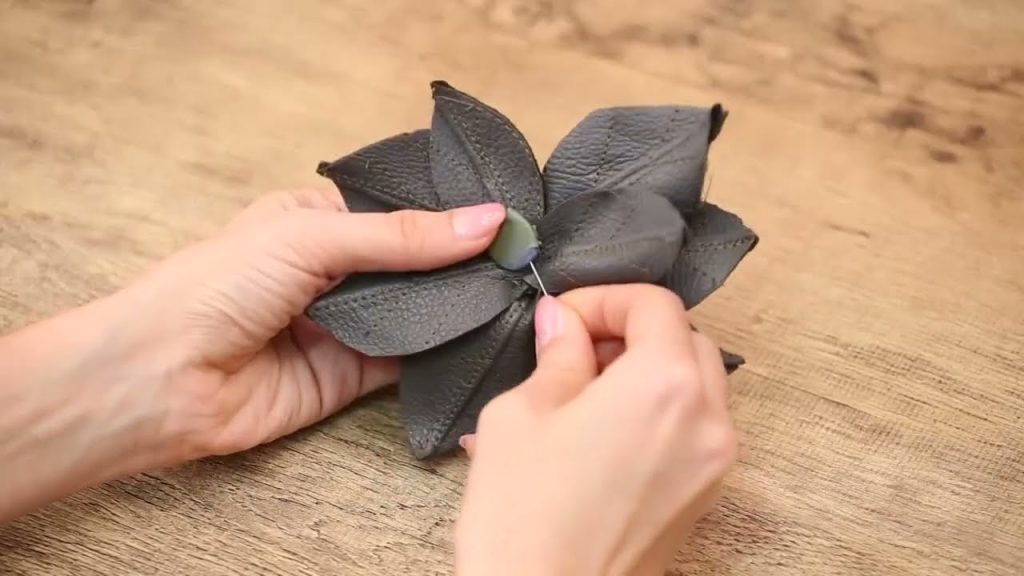
Tips for Success
- Patch Holes Creatively: If the umbrella fabric has small tears, patch them with contrasting fabric or decorative stitching.
- Double Up: Umbrella fabric is thin, so consider using two layers or adding interfacing for more structure.
- Use Strong Thread: Polyester thread is ideal for synthetic fabrics and won’t degrade with moisture.
- Recycle the Frame: Don’t throw away the umbrella skeleton — use the metal ribs as plant stakes, art supplies, or even bag handles!
Creative Variations
1. Color-Blocked Bags
If you have access to several broken umbrellas, mix and match panels to create a colorful, patchwork-style bag.
2. Reversible Bags
Use two umbrellas with complementary patterns and make the bag reversible for two styles in one.
3. Umbrella Handle Straps
With a little innovation, you can use the curved handle of a classic umbrella as a stylish and sturdy purse handle.
Benefits of Making Your Own Upcycled Bag
- Eco-Friendly: Reduces landfill waste and minimizes the need for new resources.
- Cost-Effective: Most materials are free or already available at home.
- Unique: Each bag is one-of-a-kind and tells a story.
- Empowering: Teaches valuable skills in sewing and design.
- Conversation Starter: A great way to spread awareness about sustainability and creativity.
Conclusion: Beauty in the Broken
Transforming a broken umbrella into a lovely woman’s bag is more than just a fun DIY project — it’s a statement. It says you see potential in what others throw away. It says fashion doesn’t have to come at the expense of the planet. And most importantly, it proves that with a little vision and effort, we can create beauty from the broken.

So next time you see a discarded umbrella flapping in the wind or poking out of a trash can, don’t pass it by. Pick it up, take it home, and sew yourself something beautiful. After all, what better accessory than one made from resilience, resourcefulness, and a touch of rainy-day romance?
Video tutorial:

